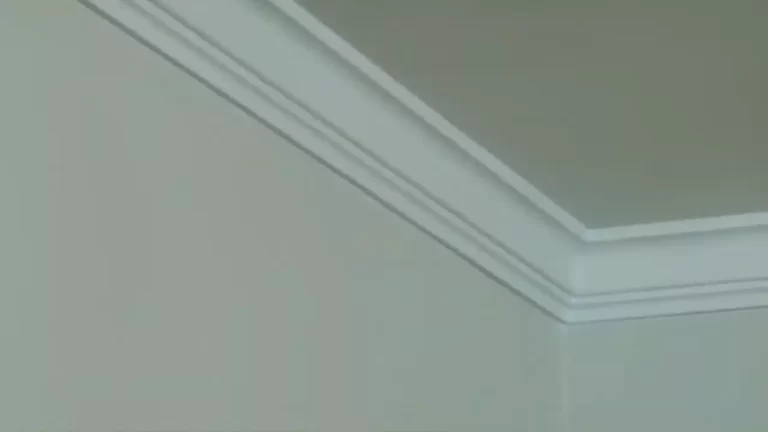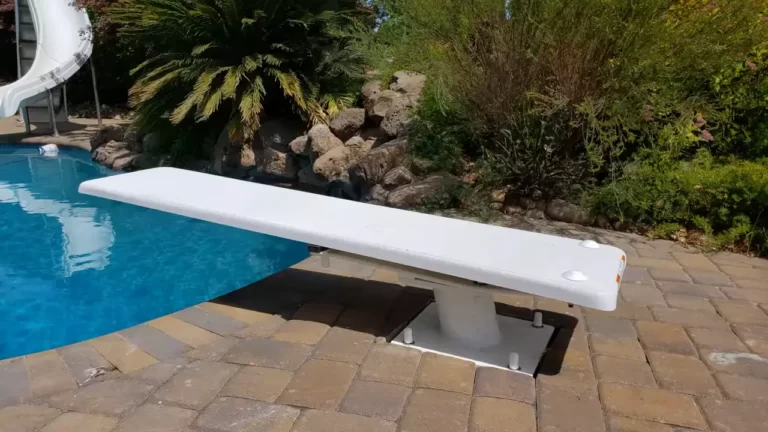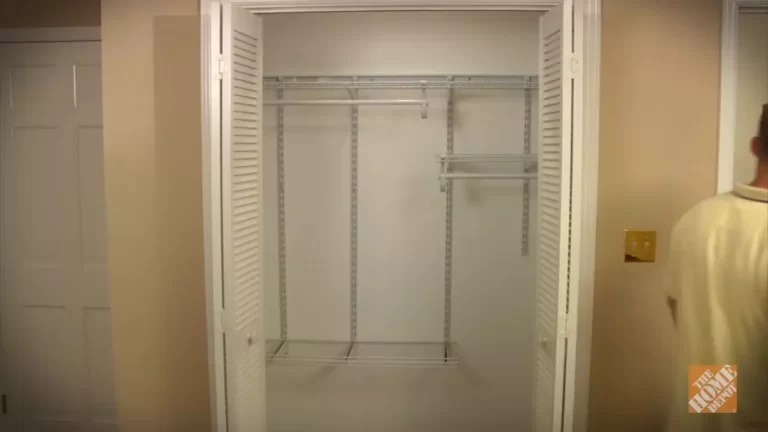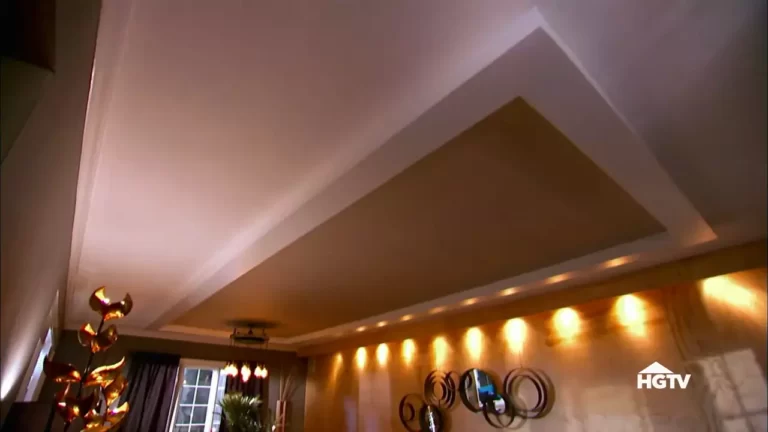How to Install Shelves Without Drilling?
To install shelves without drilling, use adhesive hooks and adhesive strips to hold the shelves in place securely. Achieve a stylish and functional storage solution without damaging your walls or using tools.
Introducing shelves into your space can provide both practical storage and aesthetic appeal. However, the thought of drilling into your walls may be daunting. Luckily, there are alternative methods to install shelves without the need for drilling. We will explore a simple yet effective solution – using adhesive hooks and adhesive strips.
These lightweight, easy-to-install options allow you to create a versatile storage solution without causing damage to your walls. Whether you’re a renter or simply prefer not to drill holes, this guide will show you how to effectively install shelves without drilling, giving your space a fresh, organized look.
Adhesive Mounting Options
When it comes to installing shelves without drilling, adhesive mounting is an excellent option to consider. This method allows you to securely attach shelves to walls without the need for any tools or additional holes in your precious walls. Adhesive mounting provides a convenient and efficient solution for renters or those who prefer not to drill into their walls.
In this section, we will explore the pros and cons of adhesive mounting, ways to assess the suitability of adhesive mounts for your shelves, and recommended adhesive products for hassle-free shelf installation.

Pros and Cons of Adhesive Mounting
| Pros | Cons |
|---|---|
|
|
Assessing the Suitability of Adhesive Mounts for Your Shelves
Before diving into adhesive mounting, it’s essential to evaluate whether this method is suitable for your specific shelving needs. Consider the following factors when assessing the suitability of adhesive mounts:
- The weight of your shelves: Adhesive mounts typically have weight limitations, so make sure your shelves fall within the specified weight range.
- The condition of your walls: Adhesive mounts work best on smooth and clean surfaces. If your walls have rough textures or excessive grime, it may affect the adhesive’s performance.
- The intended use of your shelves: If you plan to display heavy items or frequently place and remove objects from your shelves, adhesive mounts may not provide enough stability for your needs.
Recommended Adhesive Products for Shelf Installation
When it comes to adhesive mounting, using reliable and high-quality products is crucial for a successful shelf installation. Here are some recommended adhesive products that have proven their effectiveness:
- Heavy-Duty Adhesive Strips: These adhesive strips provide strong support and are designed for heavier shelves. They usually come with an easy-to-use application and removal mechanism.
- Mounting Squares: Mounting squares offer a versatile adhesive option and can securely hold shelves of various sizes and weights. They are ideal for temporary installations and can be easily removed without leaving any residue.
- Construction Adhesive: If you require extra strength and durability, construction adhesive is an excellent choice. This adhesive is suitable for permanent shelf installations and can bond a wide range of materials.
Ensure you carefully read and follow the instructions provided by the manufacturer for optimal results.
By considering the pros and cons of adhesive mounting, assessing the suitability for your shelves, and using recommended adhesive products, you can confidently install shelves without drilling while maintaining the integrity of your walls.

Tension Rod Solutions
When it comes to installing shelves without drilling, tension rods are a popular and versatile solution. These handy rods can be easily adjusted to fit various spaces, making them perfect for temporary shelving needs. In this section, we will explore how to use tension rods for your shelving project.
Using tension rods for temporary shelving
Tension rods are a fantastic option for creating temporary shelves in your home. Whether you need extra storage in the kitchen, bathroom, or bedroom, tension rods can do the job without causing any damage to your walls. Here’s how you can use tension rods for your shelving needs:
- Choose the location where you want to install the shelves. Measure the width of the space to determine the appropriate length for the tension rod.
- Extend the tension rod to its maximum length, then twist it to increase the tension. This will secure the rod in place without the need for any drilling.
- Place the tension rod between two walls or any other suitable surfaces. Ensure that the rod is level and secure.
- Once the tension rod is in place, you can add the shelves. Choose lightweight materials such as wire baskets or wooden boards that can be easily placed on top of the tension rod.
Adjusting tension rods for proper fit and stability
One of the advantages of using tension rods is their adjustability. You can easily modify the length of the rod to achieve a proper fit and ensure stability. Follow these steps to adjust a tension rod:
- Start by loosening the tension on the rod. Twist it counterclockwise to release the pressure.
- Once the tension is released, you can extend or retract the rod to the desired length.
- Tighten the rod by twisting it clockwise. This will increase the tension, securing the rod in place.
- It’s important to regularly check the stability of the tension rod and make adjustments if necessary. If you notice any sagging or instability, simply repeat the adjustment process until the rod fits snugly and supports the shelves properly.
Choosing the right tension rod for your shelving needs
When selecting a tension rod for your shelving project, it’s essential to choose the right one to ensure optimal performance. Consider the following factors before making your decision:
- Length: Measure the width of the space where you plan to install the shelves. Choose a tension rod that can be adjusted to fit this measurement.
- Material: Tension rods are typically made of metal, but you can also find options with plastic components. Consider the weight of the shelves you intend to use and choose a rod made from sturdy materials that can support the load.
- Diameter: The diameter of the tension rod can affect its stability. Thicker rods tend to be more robust and less likely to bend or sag under weight.
- Style: Tension rods come in various styles, including straight rods, curved rods, and even decorative options. Select a style that complements the overall aesthetic of your space.
By carefully considering these factors and choosing the right tension rod, you can ensure that your shelving installation is stable and functional.

Over-The-Door Hanging Solutions
When it comes to installing shelves without drilling, over-the-door hanging solutions are a game-changer. Not only are they easy to install, but they also provide a versatile and convenient storage option for any room in your home. In this section, we will explore the various ways you can utilize over-the-door hanging organizers as shelves, how to secure and organize items on these shelves, and how to decorate and customize them to match your personal style.
Utilizing over-the-door hanging organizers as shelves
If you’re looking for a hassle-free way to create additional storage space, over-the-door hanging organizers are the answer. These organizers come in a range of sizes and styles, allowing you to choose the one that best suits your needs. Whether you need extra pantry storage, a place to store shoes, or a spot to keep your cleaning supplies, there is an over-the-door organizer that can fulfill your requirements.
Simply hang the organizer over any standard-sized door, and you instantly have a shelf-like storage solution. The pockets of the organizer can be used to hold a wide variety of items. For example, in the kitchen, you can use it to store spices, utensils, or even small appliances. In the bathroom, it can hold toiletries, towels, or hair styling tools. You can even use it in the bedroom to store accessories, socks, or underwear.
Securing and organizing items on over-the-door shelves
Once you have your over-the-door organizer in place, it’s important to secure and organize your items properly. This will not only help keep everything in its place but also prevent the shelves from becoming cluttered and overwhelming.
One option for securing items on over-the-door shelves is to use adhesive hooks or clips. These can be attached to the door or organizer to hold items securely in place. For example, in a pantry organizer, you can use clips to hold packets and smaller items, while adhesive hooks can keep larger items like pans or cutting boards from shifting.
Another method is to use small storage containers or baskets within the pockets of the organizer. This allows you to group similar items together and keep them organized. For example, you can use a small basket to hold hair accessories in the bathroom organizer or use a container to store individual spice packets in the kitchen organizer.
Decorating and customizing over-the-door shelving units
While over-the-door organizers are incredibly practical, they can also be aesthetically pleasing. By taking some time to decorate and customize the shelves, you can transform them into a stylish addition to your room.
Start by choosing organizers that match the overall style of the room. Look for ones with patterns, colors, or materials that complement the existing decor. You can also consider adding labels or tags to the pockets of the organizer to make it easier to find and retrieve items.
Another way to customize these shelves is to add small decorative elements. For example, you can use adhesive decals or decals to add a pop of color or a playful design to the shelves. Additionally, you can attach small decorative hooks to hang lightweight items such as plants or small ornaments.
In conclusion, over-the-door hanging solutions are a fantastic alternative for installing shelves without drilling. They provide a simple and practical way to create additional storage space in any room. By utilizing over-the-door hanging organizers as shelves, securing and organizing items properly, and taking the time to decorate and customize them, you can not only maximize your storage but also enhance the overall aesthetic of your home.
Shelf Alternatives
When it comes to installing shelves without drilling, there are several alternatives that can provide both functionality and style to your space. Incorporating free-standing bookshelves, utilizing floating shelves, and constructing ladder shelves are all fantastic options to consider. Let’s explore each of these alternatives in more detail.
Incorporating free-standing bookshelves for easy installation
If you’re looking for a quick and easy way to add storage to your home, free-standing bookshelves are an excellent choice. These shelves come in a variety of sizes, styles, and materials, allowing you to find the perfect match for your space. Whether you prefer a minimalist design or a more rustic look, free-standing bookshelves can be a versatile and functional addition to any room.
One of the greatest advantages of free-standing bookshelves is their easy installation process. Unlike traditional shelves that require drilling into the walls, these shelves can be placed anywhere in the room without leaving any marks or causing any damage. Simply choose a spot, arrange your books, decorative items, or personal belongings, and you’re good to go!
Utilizing floating shelves for a seamless look
If you crave a seamless and modern look, floating shelves are the perfect solution. These sleek shelves appear to “float” on the wall, giving the illusion of a clutter-free and organized space. Whether you want to display artwork, photos, or small accessories, floating shelves can provide an elegant and practical display area.
Installing floating shelves is relatively simple, requiring just a few steps. Start by locating the studs in your wall to ensure proper support. Then, using a level and some screws, attach the floating shelf brackets securely. Once the brackets are in place, slide the shelf onto the brackets and secure it with small screws or clips. The result is a clean and contemporary storage solution that adds a touch of sophistication to any room.
Constructing ladder shelves as a versatile storage solution
If you’re searching for a versatile storage solution that doubles as a stylish statement piece, ladder shelves are a fantastic choice. These shelves, as the name suggests, resemble a ladder with multiple tiers, providing ample storage space for books, plants, or decorative items. Ladder shelves can be a great addition to any room, serving as a functional storage solution while adding a touch of visual interest.
Constructing ladder shelves can be a fun DIY project. You can find various tutorials and plans online to guide you through the process. Typically, you’ll need some basic tools, such as a saw and drill, as well as the necessary materials. Follow the step-by-step instructions, and in no time, you’ll have a unique and versatile storage solution that perfectly suits your style and needs.
So, whether you opt for free-standing bookshelves, floating shelves, or ladder shelves, these alternatives provide easy installation options without the need for drilling any holes. Consider your space, style preferences, and storage needs to choose the shelf alternative that best complements your home. With these creative solutions, you can have functional and visually appealing storage in no time!

Innovative Hanging Techniques
When it comes to installing shelves without drilling, there are various innovative hanging techniques that can transform your space while providing practical storage solutions. These techniques not only eliminate the need for drilling but also add a unique touch to your decor. In this section, we will explore three creative options: hanging shelves using rope or chains, installing pegboard shelves, and creating hanging crates or baskets.
Hanging shelves using rope or chains for a unique look
One of the most visually appealing options for installing shelves without drilling is to hang them using rope or chains. This technique not only adds a rustic or industrial vibe to your space but also gives you the flexibility to adjust the height of the shelves. To achieve this unique look, follow these simple steps:
- Choose sturdy shelves that can support the weight of your items.
- Measure and mark the desired height for each shelf.
- Attach eyelet screws or hooks to the wall at the marked locations.
- Securely tie one end of the rope or chain to the eyelet screw or hook.
- Thread the rope or chain through the holes on the side of each shelf.
- Tie knots or use S-hooks to secure the shelves in place.
- Ensure the shelves are level and adjust the rope or chain as needed.
- Finally, trim any excess rope or chain for a clean finish.
Installing pegboard shelves for adjustable storage options
If you’re looking for versatile and easily adjustable storage options, installing pegboard shelves is an excellent choice. Pegboards are not only functional but also provide a visually appealing backdrop for your belongings. To install pegboard shelves, follow these steps:
- Measure and mark the desired location for your pegboard on the wall.
- Secure the pegboard to the wall using wall anchors and screws.
- Choose compatible pegboard shelf brackets.
- Insert the brackets into the pegboard according to your desired shelf height.
- Place the shelves onto the brackets, making sure they are secure.
- Adjust the shelves as needed to accommodate different items.
Creating hanging crates or baskets to maximize vertical space
Maximizing vertical space is essential, especially in smaller rooms. Creating hanging crates or baskets is an innovative solution that combines functionality and style. Here’s how you can achieve it:
- Select sturdy wooden crates or baskets that suit your decor.
- Attach metal brackets or hooks to the wall at your desired height.
- Hang the crates or baskets using strong ropes or chains.
- Securely tie the ropes or chains to the brackets or hooks.
- Organize and store your belongings within the hanging crates or baskets.
- Feel free to add decorative elements or labels to personalize the space.
By embracing these innovative hanging techniques, you can install shelves without drilling and transform your space into a stylish and functional haven. Whether you opt for hanging shelves using rope or chains, installing pegboard shelves, or creating hanging crates or baskets, you’ll enjoy the added convenience and unique touch these methods bring.
Maintaining And Repairing Non-Drill Shelves
Once you have successfully installed your non-drill shelves, it’s important to know how to maintain and repair them when needed. Here are some helpful tips for cleaning, adjusting, reinforcing, and repairing your adhesive-mounted shelves and tension rods:
Cleaning and Caring for Adhesive Mounted Shelves
Keeping your adhesive mounted shelves clean not only ensures their longevity but also maintains their aesthetic appeal. Here’s how you can care for them:
- Regularly dust the shelves using a soft cloth or feather duster to remove any loose debris.
- For tougher stains or spills, use a mild detergent diluted in warm water. Gently wipe the affected area using a soft cloth or sponge, taking care not to damage the adhesive.
- Avoid using abrasive cleaners or harsh chemicals that can damage the shelf surface or adhesive.
- Once the shelves are clean, dry them thoroughly with a clean cloth to prevent any moisture from weakening the adhesive.
Adjusting and Reinforcing Tension Rods for Stability
Over time, tension rods may start to lose their stability and require adjustments or reinforcements. Here are some steps you can take to ensure your non-drill shelves remain stable:
- Firstly, check if the tension rod is properly installed and tightened. If it seems loose, you may need to tighten it further to provide better support.
- If tightening the rod doesn’t solve the stability issue, consider adding rubber pads or adhesive strips to the ends of the rods. These additions can help create a stronger grip against the walls or other surfaces, enhancing stability.
- Another option to reinforce tension rods is by using adjustable curtain brackets. These can be attached to the walls or surfaces, providing extra support and preventing the rods from slipping or falling.
Repairing Damaged or Loose Non-Drill Shelves
Occasionally, non-drill shelves may become damaged or come loose. Instead of replacing them, you can try repairing them with these simple steps:
- If the adhesive starts to lose its grip, clean the surface of the shelf and the area it will be attached to. Apply a fresh adhesive strip or glue, following the manufacturer’s instructions, and firmly press the shelf back in place.
- If a shelf becomes damaged or cracked, consider using epoxy adhesive or strong adhesive tape to fix it. Apply the adhesive to the damaged area, hold it in position until it sets, then let it cure according to the instructions.
- For wooden non-drill shelves, you can also use wood filler or putty to repair minor nicks or scratches. After applying the filler, sand it down to match the original surface, and finish it with paint or a matching wood stain.
By following these maintenance and repair tips, you can ensure that your non-drill shelves remain functional and secure for a long time. Regular cleaning, adjusting, and repairing when necessary will help you make the most of these convenient shelving solutions without the need for drilling.

Safety Considerations
When it comes to installing shelves without drilling, safety should always be a top priority. Taking necessary precautions can help prevent accidents and ensure the stability of your shelves. In this section, we will discuss three essential safety considerations to keep in mind:
Assessing weight limits and load-bearing capabilities
Before installing shelves without drilling, it is crucial to assess the weight limits and load-bearing capabilities of the surface where you plan to mount them. Each surface may have different weight capacities, and exceeding them can lead to accidents and damage to your belongings.
To determine weight limits, refer to the manufacturer’s guidelines or consult with a professional. Additionally, make sure to consider the weight of the items you intend to place on the shelves. Distributing the weight evenly across the shelf surface is essential to maintain stability.
Ensuring proper installation to prevent accidents
Proper installation is key to preventing accidents when mounting shelves without drilling. Take the time to read the instructions provided by the manufacturer carefully. If any anchors or mounting brackets are included, ensure they are suitable for the surface you are working with.
During installation, double-check that all materials are securely fastened. Use a level to ensure the shelves are horizontally aligned, as an imbalance can compromise stability. Take extra care when handling heavy shelves and ask for assistance if needed. Your safety and the safety of others should always be a priority.
Regular maintenance and checks for shelf stability
Maintaining the stability of shelves that are installed without drilling is essential to avoid accidents in the long run. Make it a habit to inspect the shelves regularly for any signs of wear, such as loose screws or brackets.
If you notice any issues, address them promptly by tightening screws or replacing damaged components. Regularly check the shelf’s stability by gently applying pressure to test for any movement or wobbling. By conducting routine checks and maintenance, you can ensure that your shelves remain safe and secure.
Inspirational Ideas And Tips
DIY Shelf Projects Without Drilling
One of the biggest concerns when it comes to installing shelves is the drilling process. Not only can it be time-consuming and messy, but it may also damage your walls. Thankfully, there are alternative methods that allow you to create stylish and functional shelving units without having to drill into your walls. In this section, we will explore some DIY shelf projects that require absolutely no drilling.
1. Staircase Display Shelf: Turn your staircase into a stunning display area by utilizing the space under each step. Simply attach wooden planks or floating shelves to the side of the stairs using strong adhesive strips. This not only provides extra storage but also adds a unique touch to your home decor.
2. Hanging Rope Shelves: Incorporate a touch of bohemian flair into your space by creating hanging rope shelves. To make these, you will need wooden boards, thick ropes, and ceiling hooks. Secure the ropes to the ceiling and tie them to the boards. Adjust the height of each shelf according to your needs and voila! You have a stylish and functional storage solution.
3. Tension Rod Shelving: Tension rods are incredibly versatile and can be used to create simple and adjustable shelving units. Install tension rods between two walls to create a sturdy base, and then place wooden or wire baskets on top. These tension rod shelves can hold a variety of items and can easily be adjusted or removed when needed.
Creative Ways to Style Non-Drill Shelves
Once you have installed your non-drill shelves, it’s time to unleash your creativity and style them in unique and eye-catching ways. Here are some ideas to inspire you:
- Artistic Display: Arrange your shelves in a creative asymmetrical pattern for a visually striking display. Mix and match different sizes and shapes of objects, such as books, plants, and decorative items, to create an artistic and personalized arrangement.
- Colorful Wall of Books: Transform your non-drill shelves into a colorful wall of books by arranging them in a rainbow gradient. This not only adds a vibrant pop of color to your space but also serves as a practical and accessible storage solution.
- Minimalist Showcase: For a clean and minimalist look, opt for a monochromatic color scheme. Arrange your shelves with a few carefully selected objects, such as sleek vases, small sculptures, or minimalist picture frames, to create an elegant and sophisticated focal point.
Expert Tips for Maximizing Space and Functionality with Non-Drill Shelves
Creating effective storage solutions while maximizing space and functionality is key when using non-drill shelves. To make the most of your non-drill shelves, consider the following expert tips:
- Utilize Vertical Space: To maximize storage, consider installing taller shelves that go all the way up to the ceiling. This utilizes otherwise unused vertical space and provides ample storage for books, decor, or even storage boxes.
- Label or Categorize: Organize your shelves by labeling or categorizing items. Use decorative baskets or storage bins to group similar items together, making it easier to find what you need quickly.
- Modify Shelf Heights: Adjust the height of your non-drill shelves according to the items you plan to store. This allows for better organization and prevents wasted space.
- Add Lighting: Incorporate LED strip lights or small LED spotlights to illuminate your shelves. This not only showcases your items but also adds a warm and inviting ambiance to the room.
By implementing these DIY projects, creative styling ideas, and expert tips, you can successfully install and decorate non-drill shelves to transform your space into a functional and visually appealing haven.
Frequently Asked Questions On How To Install Shelves Without Drilling
How Can I Install Shelves Without Drilling Holes In The Wall?
To install shelves without drilling, you can use adhesive strips or hooks designed for hanging shelves. These options provide a secure hold and can be easily removed without causing damage to the wall. Simply follow the instructions provided with the adhesive strips or hooks for a hassle-free installation.
What Types Of Shelves Can Be Installed Without Drilling?
You can install various types of shelves without drilling, such as floating shelves, adhesive shelves, or tension rod shelves. These alternatives offer a convenient and damage-free solution for adding storage and display space to your walls. Choose the type of shelf that best suits your needs and style.
How Do Adhesive Strips Work For Installing Shelves?
Adhesive strips for installing shelves work by providing a strong adhesive bond between the shelf and the wall. These strips are typically made of a durable material that can withstand the weight of the shelf and its contents. By following the instructions and applying the strips correctly, you can achieve a secure and reliable installation without drilling.
Can Shelves Installed Without Drilling Hold Heavy Items?
Yes, shelves installed without drilling can hold heavy items, as long as you choose the appropriate adhesive strips or hooks designed for heavier loads. Be sure to check the weight capacity specified by the manufacturer and distribute the weight evenly across the shelf.
This will help ensure the stability and durability of the shelf installation.
Conclusion
Installing shelves without drilling is a convenient and practical solution for those who are renting or wish to avoid damaging their walls. With the methods discussed, such as adhesive hooks and tension rods, anyone can easily create stylish and functional shelving without the need for power tools or permanent fixtures.
By following these tips and considering the weight and stability of your chosen shelves, you can confidently add storage and decorative elements to any room. Simplifying the process while still ensuring safety and effectiveness is key. Happy shelf installation!







